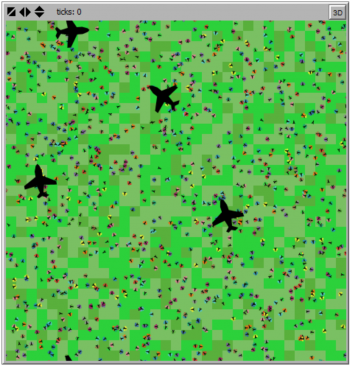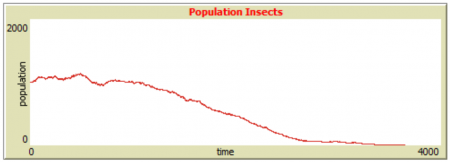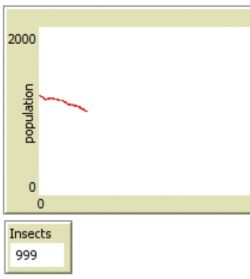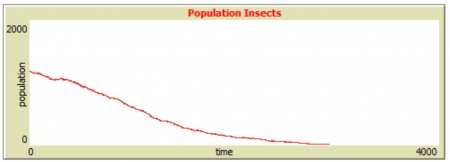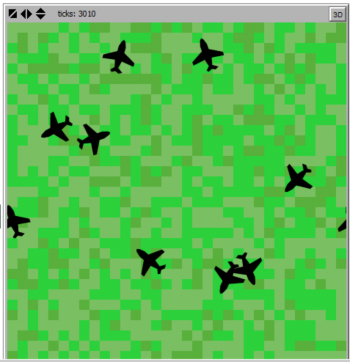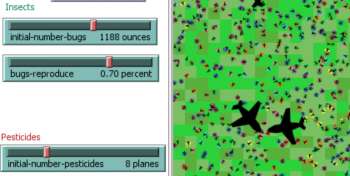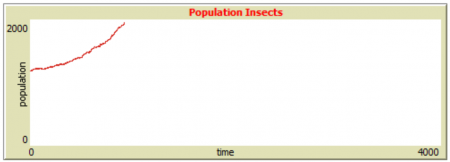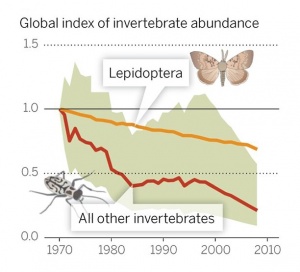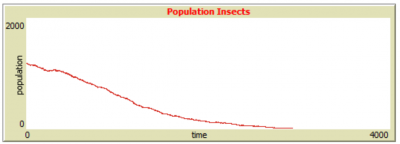Poison and Insect Population
Contents
Introduction
Insect population is declining around the world due to monoculture farming, habitat loss, and the use of pesticides. In parts of Europe and America, monocultures cover large areas of land creating biological deserts where insect’s reproduction is limited because they can’t find hedges or ponds where they can go to reproduce. On top of a declining birth rate, insects are being poisoned by the dispersion of pesticides for increased crop yield. Pesticides contaminate soil, water, and the plants that many insects feed off. The pesticides attract and then destroy any pests feeding on a farmer’s crop.
In an investigation conducted by Christian Schwägerl he found that over the last 25 years the average biomass of insects inhabiting German woodlands and meadows decreased by 18.9%. Schwägerl suggests that this rate will continue to decrease without policy intervention worldwide.
Small organisms have great importance in our food chain and we rely of them for so many things we take for granted. The goal of my simulation will be to model the long-term effects of declining insect population to predict the estimated timeline for insect extinction.
Method
Software
NetLogo 5.3.1 (2D) was the most appropriate software to illustrate this model.
Simulation Details
The simulation is tailored to a study [1] that took place in Germany that analyzed why insect populations are declining.
To account for the decreasing biomass of insects I focused on the impact that pesticides have on poisoning the population. Monoculture devastation is represented by the reproduction rate among living insects to bare only one offspring; the user may vary this number depending on the region they are inspecting.
The amount of living insects is accounted for in ounces. One butterfly on the graphic represents one ounce of wild bees, hoverflies, and other kinds of bugs. Airplanes are used to apply pesticides to crop fields twice during a crop cycle; once before the plant emerges and the other after. Hydraulic sprayers on the bottom of these planes disperse pesticides from a tank that can hold anywhere from 400 to 800 gallons.
In this simulation, each crop cycle consisting of two applications of pesticide is responsible for killing 1.3 ounces of bugs. Graphically, only pesticides are shown to be killing the insects; however, the birth rate is a direct effect of monoculture farming that can be determined before starting the simulation. Global population loss due to habitat loss is not accounted for.
Model
Insects
Represented as multicolored butterflies. The agent is commanded to move around in the simulation and reproduce at a certain level. They lose energy as they become more vulnerable to the insecticide and once the bugs energy level reaches zero they die.
Pesticides
Represented as airplanes. Each plane kills on average 1.3 ounce of insects every two ticks. Being in contact with the pesticide-dispensing airplane wares down the energy of the bugs until death.
Visualization of Problem
Settings
Adjusting the initial-number-pesticides slider lets you see how drastically one more plane carrying pesticides can change the slope on the “population” plot.
Adjusting the bugs-reproduce slider lets you change the birth rate. A reproduction rate of 100% allows one ounce of bugs to create one ounce of offspring. To yield best results the production rate should be set to .70 (half of the population is female and has more than one offspring, minus habitat loss). Earlier I stated that insecticides weren’t the sole contributor to population loss so for this simulation to be more accurate I considered habitat loss and monoculture when setting the reproduction rate.
The initial-number-bugs slider controls how many insects you want to participate in the model. Insect population varies by region.
Results
Case 1 Representation of Study Findings
This first simulation is useful because it helps to understand the observations of the past. It does not lead us to any new knowledge. In this case I replicate the last 25 years of insect decline using data gathered by entomologists. The calculated average percentage decrease in population is 0.756% annually.
Assumptions: - Airplanes kill 1 ounce of insect per year. - One tick is one year. -0.756% is 1 out of 132 (or 9/1188).
To replicate these conditions, we must set the adjustable sliders as follows: set initial-population 1188, set initial-number-pesticides 9 (one airplane to kill 132 ounces of insect per year). Once 18.9 percent of the population has been killed off you are left with 999 ounces remaining and a population trend shown in the picture below.
Case 2 Demise of Insects
If these conditions continue, the demise of insects is unavoidable. Keeping the same conditions constant from the prior model, this is what the population trend will look like.
Case 3 Insect Repopulation
There is a point in each case applied to the model where the large population of insects and the reproduction rate can outlive the pesticides and the number of bugs exponentially increases. By reducing the number of pesticide carrying airplanes by one (now 8) the bugs can restore their population.
Conclusion
The plot that my simulation made for the decline of insects is similar to the one published with the Yale study.
If there is a pesticide drop every two ticks killing 1.3 ounces of insects, it takes just under 3,000 ticks to end the extinction of earths insects. Assuming a farmer has one harvest cycle per year; per my model, insects could disappear in the next 1500 years. It is a good thing that insects have a high reproduction rate and can easily reestablish their population if we relax insecticides only slightly.
Code
Sources
http://reveg-catalog.tamu.edu/05-Chemical.htm
http://e360.yale.edu/feature/insect_numbers_declining_why_it_matters/3012/
--Kellistefl (talk) 01:18, 18 December 2016 (CET)
